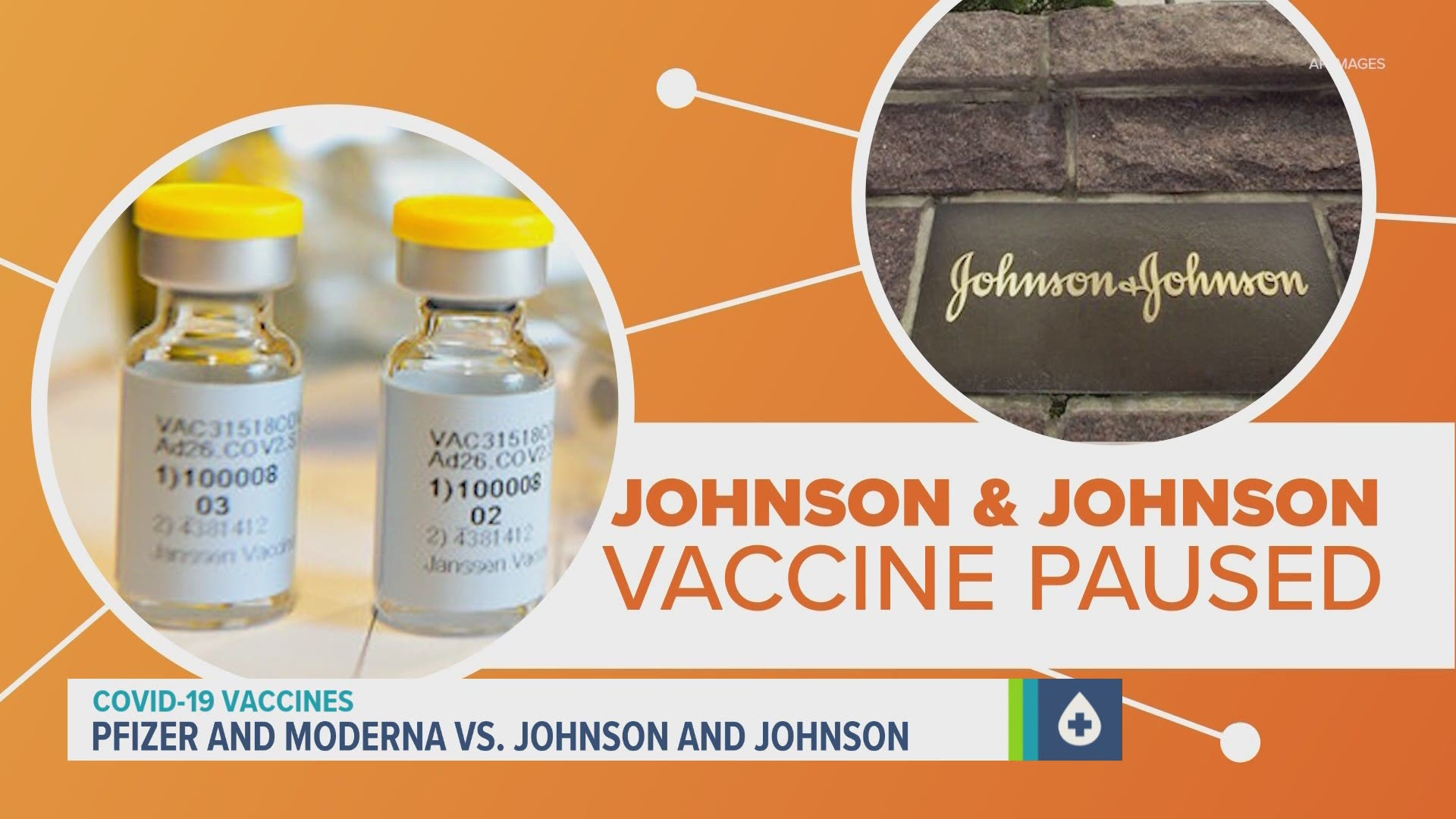HOUSTON — While federal health officials have recommended pausing use of the Johnson & Johnson COVID-19 vaccine, the Pfizer and Moderna vaccines are still being distributed.
So how are they different? Let’s Connect the Dots:
DNA versus mRNA
Pfizer and Moderna’s COVID-19 vaccines use new technology called mRNA to protect patients from coronavirus. However, the J&J shot uses DNA instead.
Researchers took DNA from the coronavirus and put it in something called an adenovirus, which is a common group of viruses that usually cause cold or flu-like symptoms. This one has been modified so it can’t replicate in your body making you sick. It acts as a trojan horse to prompt your body to create antibodies against coronavirus.
More durable, no extreme cold
There are some advantages to using DNA instead of mRNA. It is more rugged and that adenovirus helps protect the genetic material inside. Which means the Johnson & Johnson vaccine is more durable. It can be kept at normal fridge temperatures for three months instead of the extreme cold needed for Moderna and Pfizer.
AstraZeneca pause in Europe
Johnson & Johnson's vaccine works in similar ways as the AstraZeneca vaccine, which has not been approved yet in the United States.
While it has been approved for use in Britain and Europe, the AstraZeneca vaccine has run into issues. Several countries briefly paused using it after rare blood clots were reported although European officials estimate that risk is one in a million.
MORE ON CORONAVIRUS VACCINES

